A few weeks ago Chris Swecker and I spent anther couple days documenting the ongoing construction of a pair of Gragg Chairs I am building for clients, one a renowned furniture historian in Virginia and the other a historic architectural millwork contractor in Georgia. (These clients have been most patient with the timeline of this project, which is why I have not made them pay anything until the chairs are delivered.) Neither my bank account nor the other ongoing projects I have permit any faster pace of work, and we had to take a 5-month break over the winter due to the unheated-ness of the studio space.

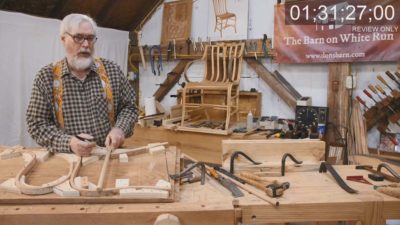
As we were working the chairs began to take shape beyond merely the jumbled pile of steam bent parts. Actually they were never really “jumbled,” but they were not truly assembled either. It was exciting for Chris to see these former tree parts become chair-ish right before the camera. Beginning with the dry assembled side elements I laid out the side rungs and chopped the mortises and cut the tenons. Then I resembled the side units with screws and glue, just as Gragg had done 200 years before.
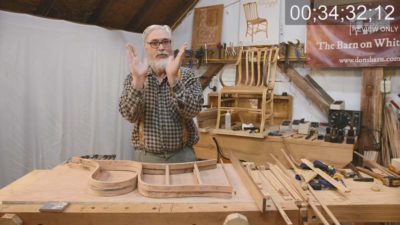

Then came perhaps the most visually appealing portion of the project to date as the two sides were connected with the lateral horizontal elements, becoming something that sorta looked like a chair. This required a bucket full of spring clamps and a few diagonal struts to keep things in the right configuration while moving forward.
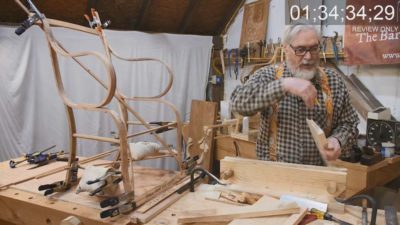

By the time the two days were done we had another 7 gigabytes of video recorded. We are working so efficiently that I expect a yield of usable video to raw recording to be about 60%. In reviewing the completed materials I am thinking the finished product to be in the 10-12 hour range.
Many years ago when Knew Concepts saws burst onto the marketplace I met and was befriended by the gurus behind them, Lee Marshall and Brian Meek. There are not many tools that can change the way I work, but their saws did. As an outgrowth of our friendship I began to collaborate with them to refine their products and even begin down the road of developing whole new tools.
One of the tools I encouraged them create was a vertical oriented marquetry chevalet. Yes, I know that traditionalist and purists might snort at me for that position, but let me explain to you how much I care about that. (Cue the sound of crickets.) You can find my tale of encountering their initial engineering design prototype here.
Now for a little more background.
I have been cutting veneers for more than forty years, almost always in the context of repairing or replacing missing marquetry or plain veneers. I learned to cut it on a horizontal bench pin using a jeweler’s frame saw freehand in the vertical orientation.
Once I got to use a traditional chevalet, a hand powered machine that interestingly enough post-dates what many think was the Golden Age of Marquetry, my experience and muscle memory/work habits left me unimpressed with my own skill with the tool. I have seen others use it in a manner that could only be described as magnificent, but I have never developed a facility with the device to make it my default tool. (It might very well be the result of me not having thousands of hours behind the wheel, so to speak, with an intimidating task master peering over my shoulder. By the time I got to use a full-scale chevalet I was long passed the point of being intimidated about much of anything. Once you go nose-to-nose with a bind drunk idiot neighbor shooting a revolver in his back yard while my kids were playing in my back yard, everything else takes its proper place in the hierarchy of intimidation.) Instead, I always reverted to my older method in which I had honed my skills.
Once I saw Steve Latta demonstrate his version of a bench-top horizontal action chevalet I built my own, and I got better results with that than with the full scale, sit down version. Not yet great, but better. Still, I could see some great possibilities based on my execution of the concept.
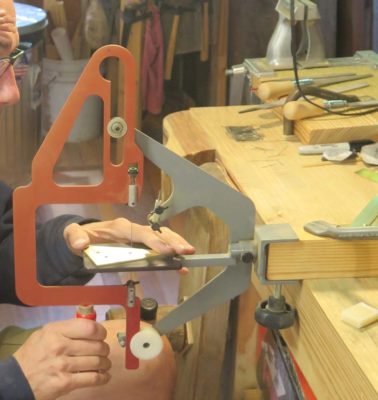
Back to Knew Concepts. I was attracted not only to their jeweler’s saw frames but practically swooned once I learned of their Mark Series of fixed-orientation saws. I had to have one! I got one and again it changed the way I could work in the marquetry techniques I used, mostly Boullework style and double-bevel style. The Mark Series saw made cutting small pieces of marquetry (about a 6″ size limit) practically idiot-proof, and sometime I can be a pretty high-powered idiot.
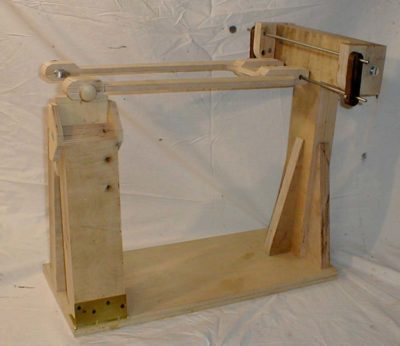
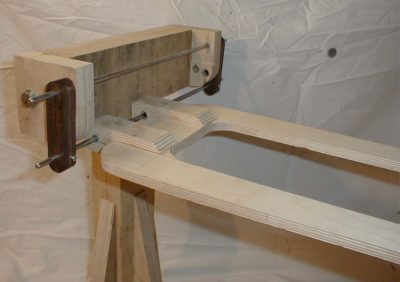
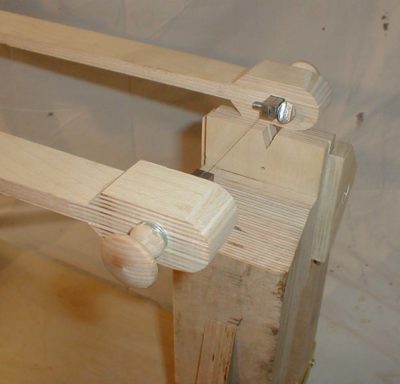
Lee and Brian and I continued to correspond and meet at various woodworking tool events, and eventually I convinced them to give it a try. Our dinners together always seemed to result in a stack of napkins covered in design drawings and spec lists. Brian came to see me in DC, well actually he came to see my bench top chevalet — I was incidental to the trip (not really, I always thoroughly enjoyed my interactions with Lee ad Brian, both creatively and socially) — and he returned to Crazyfornia to begin designing a saw incorporating and fusing all our ideas. Soon computer generated design drawings were flying back and forth across the continent.
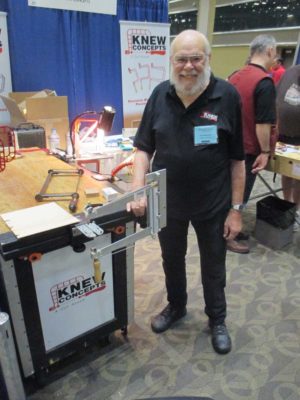
Then came the Woodworking in America 2016 when Lee promised to “show you something special.” I could practically see the twinkle in his eye just from the email. As I phrased it at the time,
“I encountered the working concept prototype whose gestation was several years, and as I worked with the tool I felt, more than heard, a thunderclap. Everything that had been was now no more.”
Shortly thereafter Lee fell gravely ill, and eventually passed away. Brian took the helm of the enterprise and the process of transition took all of his time and energy, and then some. We corresponded infrequently for a couple years, then a few months ago it picked up again and I asked him if the bench top vertical-cut chevalet was ever going to become a production reality. Knowing how swamped he was I sorta expected a note of the “Man I am just too busy to think about it,” variety. Imagine my delight when instead he wrote back and told me they were in the home stretch of the initial production prototype.

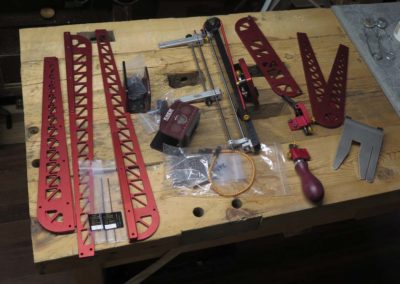
Last week a couple packages arrived arrived, and it is better than Christmas at the Barn on White Run these days. A whole lotta time, energy, and ideas have come to fruition.
Stay tuned.
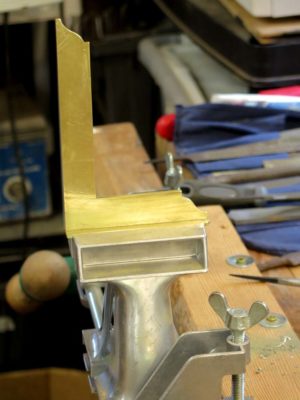
Day 3 was almost entirely a continuation of Day 2, bringing the squares closer to completion. It was pretty insistent that each student had at least one square all the way done to guide them once they got back home. I’m pretty sure each of them headed hme with at least a couple finished.
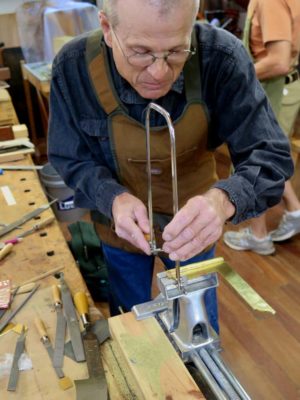
There was a little sawing as the shoes were trimmed as necessary following their brazing.

The sounds of filing and sanding permeated the air as squares were trued, followed by the gentler sanding with finer paper in getting the surfaces polished to the point of being “done.”
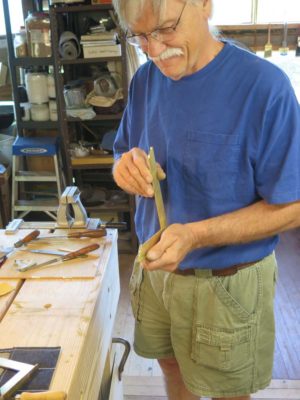
As we continued our work we were able to reflect on a grand time of fellowship and learning.
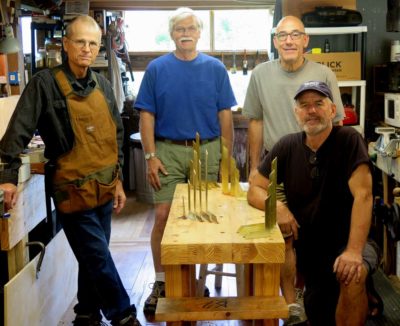
Thanks for a great workshop, gentlemen. Counting my own projects, I think the grand total for the weekend was 30 squares, eight or nine triangles, and several pounds of scraps and filings.
Now it’s time to turn my attentions to this month’s workshop on Historic Finishing.
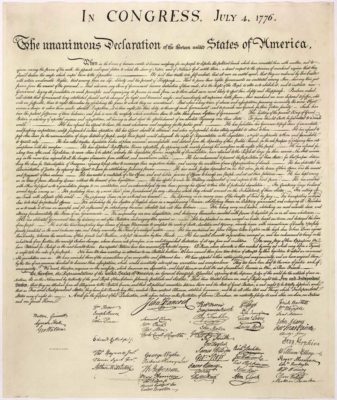
This post is presented annually at this time – DCW
As we consider the world around us it is worth reflecting seriously on the document encapsulating the ideas that founded the greatest nation ever known to man (the US Constitution WAS NOT the founding document for the nation, I believe it merely established the rules for its governance [admittedly now generally unknown and ignored] which is not the same thing). I pray you will read and reflect on the ideas expressed by men who pledged their lives, their fortunes, and their sacred honor to pursue the path of liberty. Reading it is much like reading the Minor Prophets of the Old Testament; more up-to-date regarding the human condition than tomorrow’s headlines.
========================================================
IN CONGRESS, July 4, 1776.
The unanimous Declaration of the thirteen united States of America,
When in the Course of human events, it becomes necessary for one people to dissolve the political bands which have connected them with another, and to assume among the powers of the earth, the separate and equal station to which the Laws of Nature and of Nature’s God entitle them, a decent respect to the opinions of mankind requires that they should declare the causes which impel them to the separation.
We hold these truths to be self-evident, that all men are created equal, that they are endowed by their Creator with certain unalienable Rights, that among these are Life, Liberty and the pursuit of Happiness.–That to secure these rights, Governments are instituted among Men, deriving their just powers from the consent of the governed, –That whenever any Form of Government becomes destructive of these ends, it is the Right of the People to alter or to abolish it, and to institute new Government, laying its foundation on such principles and organizing its powers in such form, as to them shall seem most likely to effect their Safety and Happiness. Prudence, indeed, will dictate that Governments long established should not be changed for light and transient causes; and accordingly all experience hath shewn, that mankind are more disposed to suffer, while evils are sufferable, than to right themselves by abolishing the forms to which they are accustomed. But when a long train of abuses and usurpations, pursuing invariably the same Object evinces a design to reduce them under absolute Despotism, it is their right, it is their duty, to throw off such Government, and to provide new Guards for their future security.–Such has been the patient sufferance of these Colonies; and such is now the necessity which constrains them to alter their former Systems of Government. The history of the present King of Great Britain is a history of repeated injuries and usurpations, all having in direct object the establishment of an absolute Tyranny over these States. To prove this, let Facts be submitted to a candid world.
He has refused his Assent to Laws, the most wholesome and necessary for the public good.
He has forbidden his Governors to pass Laws of immediate and pressing importance, unless suspended in their operation till his Assent should be obtained; and when so suspended, he has utterly neglected to attend to them.
He has refused to pass other Laws for the accommodation of large districts of people, unless those people would relinquish the right of Representation in the Legislature, a right inestimable to them and formidable to tyrants only.
He has called together legislative bodies at places unusual, uncomfortable, and distant from the depository of their public Records, for the sole purpose of fatiguing them into compliance with his measures.
He has dissolved Representative Houses repeatedly, for opposing with manly firmness his invasions on the rights of the people.
He has refused for a long time, after such dissolutions, to cause others to be elected; whereby the Legislative powers, incapable of Annihilation, have returned to the People at large for their exercise; the State remaining in the mean time exposed to all the dangers of invasion from without, and convulsions within.
He has endeavoured to prevent the population of these States; for that purpose obstructing the Laws for Naturalization of Foreigners; refusing to pass others to encourage their migrations hither, and raising the conditions of new Appropriations of Lands.
He has obstructed the Administration of Justice, by refusing his Assent to Laws for establishing Judiciary powers.
He has made Judges dependent on his Will alone, for the tenure of their offices, and the amount and payment of their salaries.
He has erected a multitude of New Offices, and sent hither swarms of Officers to harrass our people, and eat out their substance.
He has kept among us, in times of peace, Standing Armies without the Consent of our legislatures.
He has affected to render the Military independent of and superior to the Civil power.
He has combined with others to subject us to a jurisdiction foreign to our constitution, and unacknowledged by our laws; giving his Assent to their Acts of pretended Legislation:
For Quartering large bodies of armed troops among us:
For protecting them, by a mock Trial, from punishment for any Murders which they should commit on the Inhabitants of these States:
For cutting off our Trade with all parts of the world:
For imposing Taxes on us without our Consent:
For depriving us in many cases, of the benefits of Trial by Jury:
For transporting us beyond Seas to be tried for pretended offences
For abolishing the free System of English Laws in a neighbouring Province, establishing therein an Arbitrary government, and enlarging its Boundaries so as to render it at once an example and fit instrument for introducing the same absolute rule into these Colonies:
For taking away our Charters, abolishing our most valuable Laws, and altering fundamentally the Forms of our Governments:
For suspending our own Legislatures, and declaring themselves invested with power to legislate for us in all cases whatsoever.
He has abdicated Government here, by declaring us out of his Protection and waging War against us.
He has plundered our seas, ravaged our Coasts, burnt our towns, and destroyed the lives of our people.
He is at this time transporting large Armies of foreign Mercenaries to compleat the works of death, desolation and tyranny, already begun with circumstances of Cruelty & perfidy scarcely paralleled in the most barbarous ages, and totally unworthy the Head of a civilized nation.
He has constrained our fellow Citizens taken Captive on the high Seas to bear Arms against their Country, to become the executioners of their friends and Brethren, or to fall themselves by their Hands.
He has excited domestic insurrections amongst us, and has endeavoured to bring on the inhabitants of our frontiers, the merciless Indian Savages, whose known rule of warfare, is an undistinguished destruction of all ages, sexes and conditions.
In every stage of these Oppressions We have Petitioned for Redress in the most humble terms: Our repeated Petitions have been answered only by repeated injury. A Prince whose character is thus marked by every act which may define a Tyrant, is unfit to be the ruler of a free people.
Nor have We been wanting in attentions to our Brittish brethren. We have warned them from time to time of attempts by their legislature to extend an unwarrantable jurisdiction over us. We have reminded them of the circumstances of our emigration and settlement here. We have appealed to their native justice and magnanimity, and we have conjured them by the ties of our common kindred to disavow these usurpations, which, would inevitably interrupt our connections and correspondence. They too have been deaf to the voice of justice and of consanguinity. We must, therefore, acquiesce in the necessity, which denounces our Separation, and hold them, as we hold the rest of mankind, Enemies in War, in Peace Friends.
We, therefore, the Representatives of the united States of America, in General Congress, Assembled, appealing to the Supreme Judge of the world for the rectitude of our intentions, do, in the Name, and by Authority of the good People of these Colonies, solemnly publish and declare, That these United Colonies are, and of Right ought to be Free and Independent States; that they are Absolved from all Allegiance to the British Crown, and that all political connection between them and the State of Great Britain, is and ought to be totally dissolved; and that as Free and Independent States, they have full Power to levy War, conclude Peace, contract Alliances, establish Commerce, and to do all other Acts and Things which Independent States may of right do. And for the support of this Declaration, with a firm reliance on the protection of divine Providence, we mutually pledge to each other our Lives, our Fortunes and our sacred Honor.
The 56 signatures on the Declaration appear in the positions indicated:
Column 1
Georgia:
Button Gwinnett
Lyman Hall
George Walton
Column 2
North Carolina:
William Hooper
Joseph Hewes
John Penn
South Carolina:
Edward Rutledge
Thomas Heyward, Jr.
Thomas Lynch, Jr.
Arthur Middleton
Column 3
Massachusetts:
John Hancock
Maryland:
Samuel Chase
William Paca
Thomas Stone
Charles Carroll of Carrollton
Virginia:
George Wythe
Richard Henry Lee
Thomas Jefferson
Benjamin Harrison
Thomas Nelson, Jr.
Francis Lightfoot Lee
Carter Braxton
Column 4
Pennsylvania:
Robert Morris
Benjamin Rush
Benjamin Franklin
John Morton
George Clymer
James Smith
George Taylor
James Wilson
George Ross
Delaware:
Caesar Rodney
George Read
Thomas McKean
Column 5
New York:
William Floyd
Philip Livingston
Francis Lewis
Lewis Morris
New Jersey:
Richard Stockton
John Witherspoon
Francis Hopkinson
John Hart
Abraham Clark
Column 6
New Hampshire:
Josiah Bartlett
William Whipple
Massachusetts:
Samuel Adams
John Adams
Robert Treat Paine
Elbridge Gerry
Rhode Island:
Stephen Hopkins
William Ellery
Connecticut:
Roger Sherman
Samuel Huntington
William Williams
Oliver Wolcott
New Hampshire:
Matthew Thornton
My reticence (inability) to discard wood even when others might see it as decrepit has once again come back to reward me.
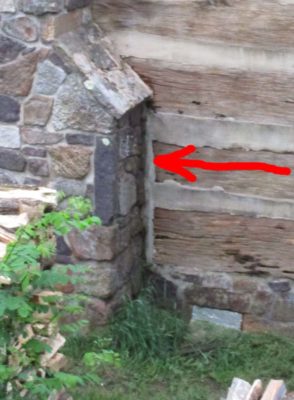
The hefty vertical timber adjacent to the chimney had degraded to the point where it needed addressing and most likely replacement. Tim the restoration contractor really wanted to use a large hunk of vintage chestnut for the replacement, and low and behold I had exactly the piece he needed.
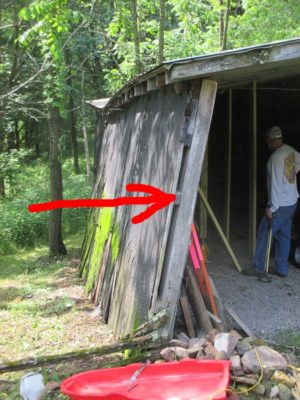
I had salvaged the chestnut posts from the lean-to of the lower log barn on the homestead when my brother and I replaced the aged and failing wasll structure with a new, built-in-place laminated post and beam wall two summers ago. The posts from the degraded wall were approximately ten inches in diameter and seven or eight feet in length. They weighed a ton.

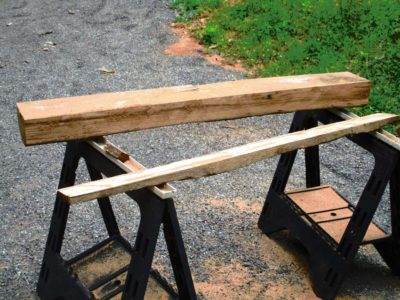
I transported one of them up to the barn and started whacking on it with my 10-inch circular saw followed by a Japanese timber saw. In about an hour I had a piece useable to the restoration crew.
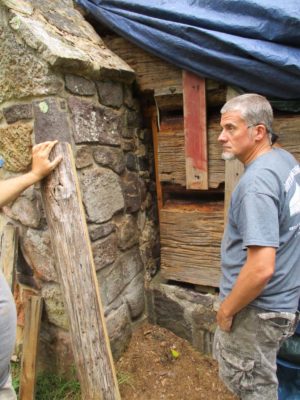
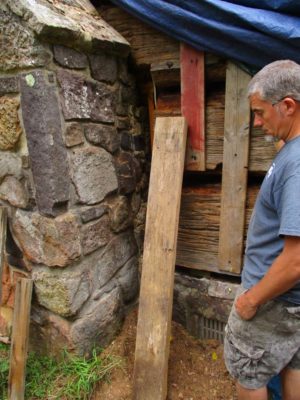
Tim said it was perfect, and after some additional fitting the new piece was inserted into the void left by the rotted old one.

One of the tools emerging from the recent Making Roubo Squares workshop was a diminutive 30-60-90 triangle. This tool is integral to much of my/our shop life for areas ranging from cubic/pinwheel parquetry to laying out the dovetailed tenons of a Roubo bench leg-and-slab double mortise-and-tenon construction.
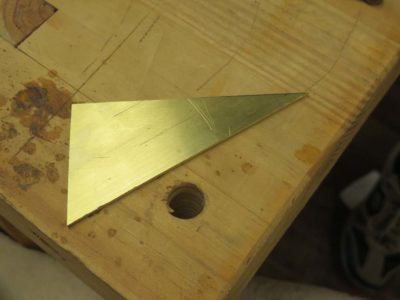
With the surplus rectangle of brass plate left over from the making of our nested set of cabinetmaker’s squares during the workshop there was plenty of brass plate left over for making other, smaller layout tools. Included in these were some small triangles that were roughly laid out with a plastic drafting triangle and rough cut on the bandsaw.
I took the opportunity to demonstrate the truing of the triangle to the workshop students, reminding them of the simple truths they learned decades ago in seventh grade Geometry class. Instead of using a micrometer or something similar to establish the tringle side lengths, a much easier, simpler, faster, and frankly more accurate method is only a compass or divider away.
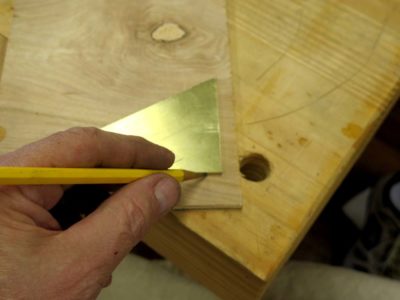
After establishing the perfect square corner between the two shorter legs of the triangle it was possible to achieve a perfect set of 30-60 degree angles by using just a scrap piece of plywood, a pencil, and a set of dividers. For work like this I almost always revert to a pair of dividers from an antique navigational drafting set that I bought for practically nothing many years ago. These German Silver (alloy of brass plus nickel) tools are simply lovely and a pleasure to the eye and the hand.
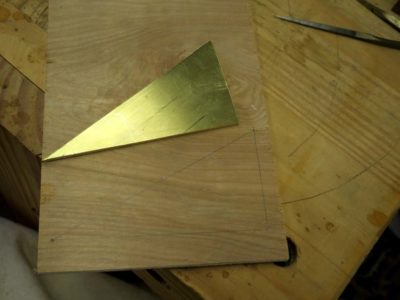
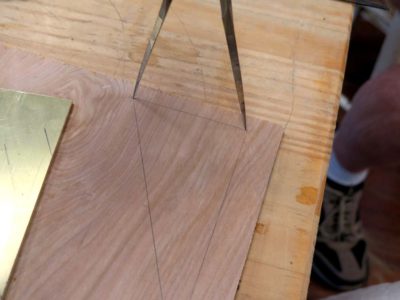
First I traced the rough triangle onto a piece of scrap plywood, and set my dividers to the exact length of the shorter side adjacent to the right angle.


Then swinging the dividers to the hypotenuse I stepped off two of those lengths. If you will recall, for a perfect 30-60-90 triangle the hypotenuse is exactly two time longer than the shorter side of the right angle.


Once I determined that two-times-longer distance along the hypotenuse I re-set my dividers to this exact distance then transferred it to the longer side of the right angle, redrew the hypotenuse on the plywood, then transferred it to the brass.

Five minutes later I had cut and filed the new hypotenuse and had a perfect 30-60-90 triangle ready to braze on the foot and put to use in a multitude of applications.
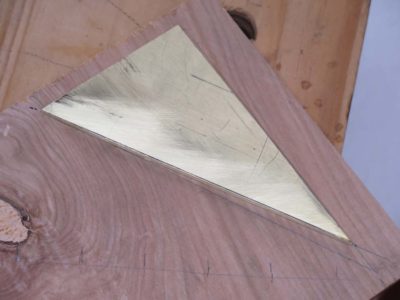
All with zero measuring, although to be honest I did grab my dial caliper afterwards to check. I wound up being off by almost 0.002″ which probably amounts to a couple seconds or so of angle degree (or, about 1/1800th of a degree). I can live with that.
To quote my mentor in the pattern shop, John Kuzma (cleaned up considerably for a family-friendly venue), “Measuring is the enemy. Layout and transfer are your friends.”
I cannot recall my 7th grade Geometry teacher’s name but I do remember Mr. Fiske, who taught me Trigonometry in 11th grade almost fifty years ago. Together these men impressed on me the importance of triangles in every-day life. Thank you, gentlemen.
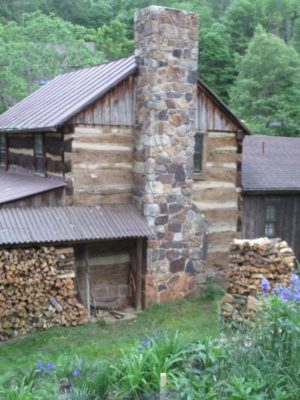

During the process of removing the ancient chinking and other fills on the log cabin, a disturbing find was a fist-sized hole on the north side wall. The hole was not necessarily a surprise as the north side was the most weather beaten with considerable surface lichens and some localized fungal rot, including some pretty substantial damage to some of the structure around the chimney (more about that next time). But the hole was concerning since it went all the way through the log!


After consulting with Tim, the owner of the log cabin restoration company, I decided to have him attempt the localized repair rather than cut out the whole log section or fill it with an epoxy-based composite. Tim thought he had just the right piece of weathered chestnut to make the fill, and the results confirmed his confidence in his skills and my confidence in him.
He had to excavate several inches on either side of the hole to get back to sound wood, and seeing the size of the pocket was a bit unnerving. But, the final results were indeed impressive.

A couple months of weathering and the fill will be invisible. Like I said, impressive.











































Recent Comments